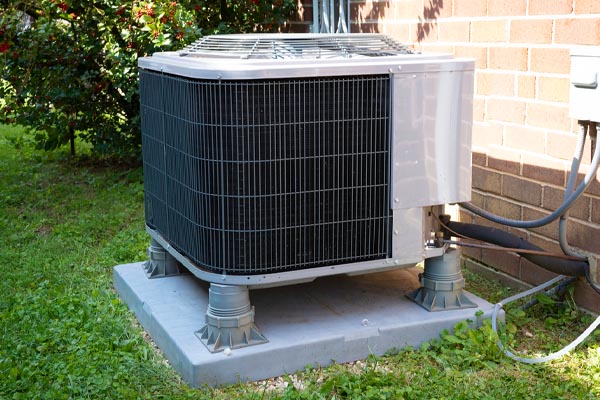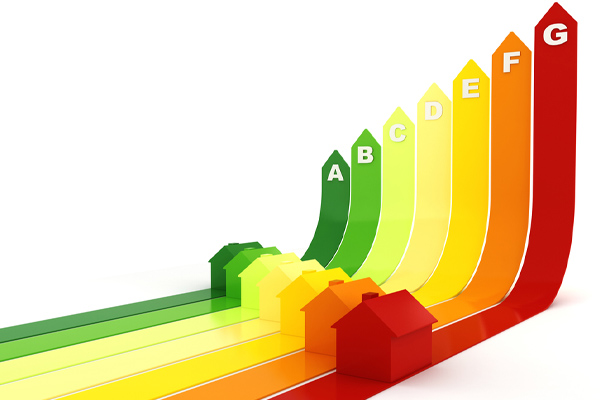Air conditioners evolve fast, especially when it concerns their energy efficiency requirements. Modern HVAC technology has brought us the modulating or variable air conditioner design, which is quickly replacing standard cooling units.
The modulating air conditioner provides smart energy use, stable performance, and more. These systems are designed to control temperature more effectively. Pair that with their ability to impressively reduce humidity to achieve better comfort. This article includes some information on the variable-speed air conditioning system.
Standard Units vs. Modulating Air Conditioners: What’s The Difference?

To fully understand and appreciate modulating HVAC technology, you must compare it to standard air conditioning units. Standard or traditional AC units feature a compressor that functions at a fixed speed. You turn it on, and it works at 100% capacity. When it is off, it completely shuts down.
Although this might not seem like a problem, an air conditioning system like this consumes a lot of energy. Starting cycles “from zero” each time requires plenty of power. This power ultimately results in a high energy bill.
Because standard units operate at a fixed speed, heating and cooling temperatures are not flexible. The airflow is usually intense and extreme, making the space very hot or very cold. This system also tends to produce hot or cold spots.
Related Article: Top Signs of An Overcharged Air Conditioner
How Is A Modulating Air Conditioner Different?
Modulating units can be modified to operate between 40% and 120% instead of at 100% all the time. This translates to the home temperature being less extreme and more even. Balanced temperatures improve comfort and general airflow quality.
Modulating air conditioning systems have a compressor with variable speeds or capacity. You can modify or adjust this speed to achieve your varied heating and cooling needs. Controlling the system’s output means you can control how much energy it consumes.
Fixed vs. Flexible Temperature Control

A common phrase you hear is “blast the AC.” This describes how standard systems usually run: you turn it on, and it blows air into the room at full speed. The air’s temperature is typically either hot or cold.
Aside from the limited temperature settings, the airflow is typically too strong. Some areas in your home may have little airflow, resulting in cold or hot spots. This can result in an uncomfortable space, especially at night.
HVAC modulating technology resolves this by having adjustable settings. Variable-speed units are made to adjust the airflow to the home’s needs. Extreme temperatures and hot or cold spots are effectively removed as the output is less intense.
Air conditioners having two or more speeds generate a steadier and more consistent airflow. They can be customized per your preferred temperature. Having output control means you can match them to your cooling needs.
It should be noted that other factors affect the airflow quality. The modulating air conditioner should be installed per the home’s specifications so that it can work optimally. Talk to an HVAC professional for more information.
Related Article: Tips for Finding A Good Air Conditioner Replacement Company
High vs. Low Humidity In The Home
Standard air conditioners need to cycle on and off more frequently. A unit that keeps stopping and rebooting may not get the chance to cycle sufficient moisture out of the air. This means there’s higher humidity in your home.
Therefore, it is a common occurrence for standard air conditioners to leave your home feeling sticky and clammy. Aside from causing discomfort, humidity also encourages mold to grow. Mold can damage your home and affect your health negatively.
Variable-speed or modulating cooling units are designed to prevent mold from growing. These air conditioners have fewer cycles so that they can reduce the moisture in the air more effectively. This results in a less humid home. It also allows you to set the temperature higher without worrying about mold or a humid indoor environment. Generally, these air conditioners can filter indoor air pollutants from the air because they run longer. This lets you enjoy better indoor air quality.
Most modulating air conditioners don’t let the humidity go over 50%, which regulating authorities highly recommend. The bad news is that traditional air conditioners have a fixed speed, so they can let the humidity rise to 60%. The units may also need replacing after some time because they become a breeding ground for mold. However, this can be avoided when the unit is properly maintained.
Remember that not all modulating air conditioners are made equal. It doesn’t guarantee that an AC will reduce humidity. Consulting a professional technician is the only way you can ensure that you get the best results. You can talk to them about the available options.
Related Article: Signs You Need Better Air Quality At Home
Maintenance Costs vs. Short Payback
Modulating air conditioners may have a high initial cost. However, you will have a lot of savings, and this can comfortably cover the cost of the unit, its installation, and maintenance. This means that this type of cooling system has a pretty short payback period.
There are methods you can do to cut air conditioner tune-up costs. However, standard units will still cost you more over time. Fixed-speed air conditioners undergo more pressure and strain than variable-speed models. This means they may require more frequent repairs and part replacements.
Related Article: Ductwork Makes Banging Noise: Causes & Solutions
Set vs. Smart Energy Consumption

High power consumption tends to be expected if you own a traditional air conditioner. This may be true, especially during sweltering summer months.
Homeowners usually have to add more insulation or boost airflow in another way to cut energy bills. Unfortunately, there is no escape from high energy costs with standard air conditioners aside from using them less. This isn’t a cost-effective way. Modulating air conditioners were built to resolve this issue. You get varying outputs with variable speeds. An air conditioner running at 40% capacity doesn’t utilize the same power when operating at 100%. It lets homeowners control how much power is used so they can keep the unit on without using too much energy.
Conclusion
Switching from standard units to modulating air conditioners is bound to happen as energy efficiency increases. Many innovations in inverter technology offer low-cost heating and cooling solutions. Apart from cutting on the cost, variable-speed models let you control the temperature and humidity effectively. This way, you enjoy a smarter, greener, and more comfortable home.
Tevis Energy’s sister company, Modern Comfort, performs HVAC installations, replacements, tune-ups, and more. Our technicians can provide you with expert HVAC services to ensure that your system provides you with the comfort and efficiency you deserve. Call now to schedule an appointment.
Related Article: Why Is HVAC Airflow So Important For My Home?
Call Tevis Energy For Your HVAC Requirements

Tevis Energy provides top-notch HVAC services in central Maryland and southern Pennsylvania. We have the best professionally certified technicians to conduct excellent HVAC services, such as boiler replacements, mini-split repairs, furnace installations, and air conditioning tune-ups. Our team of experts has the skills, knowledge, and experience to perform accurate HVAC services.
We guarantee to have quality and cost-effective services in the region. Our maintenance services can reduce your HVAC bills, enhance your comfort, and improve your energy efficiency. We can suggest the best solution for your HVAC repair or replacement needs while keeping your budget in mind. All our work is guaranteed, as your satisfaction is vital to us. Schedule a service appointment and call Tevis Energy today. We offer free, in-home estimates.
You can click here to contact us now or call us at (410) 876-6800 to find out more! Click the link to view our service area.
